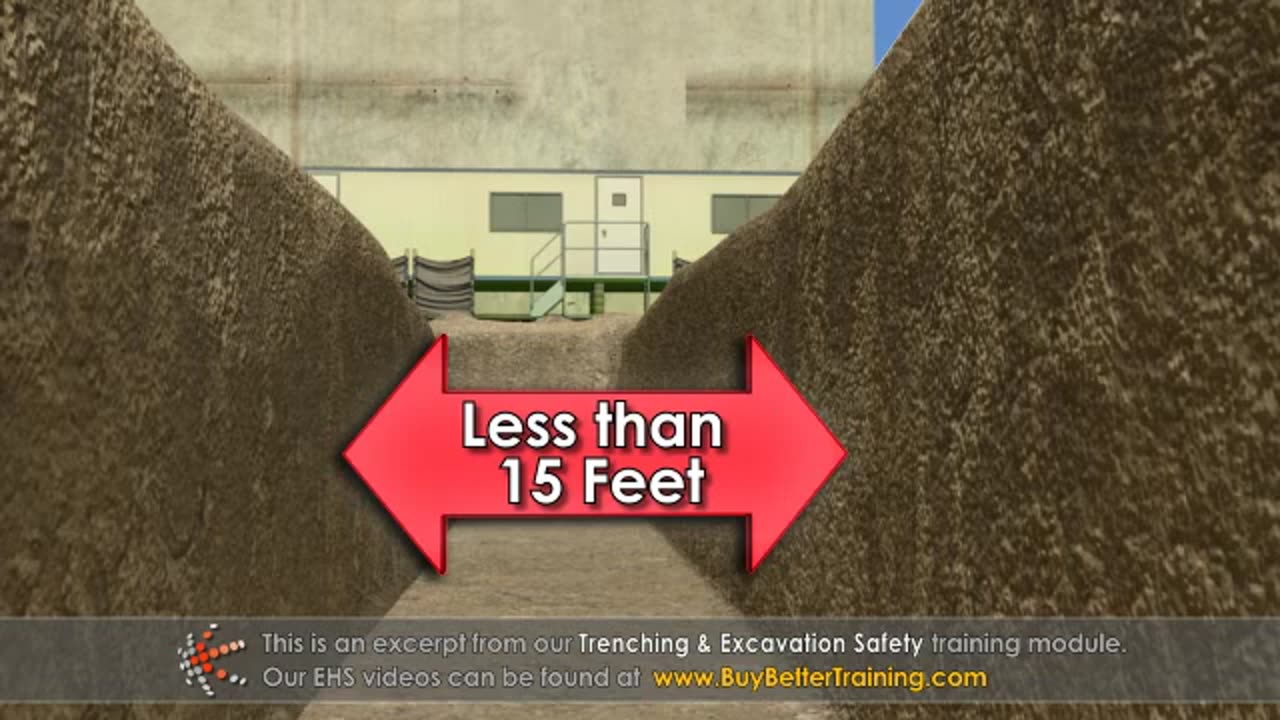Premium Only Content

Trenching and Excavation Training
### **Trenching and Excavation Safety Training Outline**
This training program aims to educate workers about the hazards of trenching and excavation activities and provide practical knowledge to minimize risks and comply with safety standards.
---
### **1. Introduction to Trenching and Excavation Safety**
- **Purpose of training:**
- Protect workers from potential hazards.
- Ensure compliance with OSHA standards (e.g., OSHA 1926 Subpart P).
- **Definition:**
- **Trench:** A narrow excavation (depth greater than width, less than 15 feet wide).
- **Excavation:** Any man-made cut, cavity, trench, or depression in the earth's surface.
- **Importance of safety in trenching and excavation:**
- Risks of collapse, injuries, and fatalities.
- Highlight relevant statistics.
---
### **2. Hazards Associated with Trenching and Excavation**
- **Cave-ins:** The most common and deadly hazard.
- **Falling loads:** Tools, equipment, or materials falling into the trench.
- **Hazardous atmospheres:** Lack of oxygen, toxic gases, or flammable materials.
- **Water accumulation:** Flooding or erosion weakening trench walls.
- **Utility strikes:** Contact with underground utilities like gas, water, or electrical lines.
- **Vehicular hazards:** Equipment or traffic near the excavation site.
---
### **3. Pre-Planning and Site Preparation**
- **Competent person:** A trained individual responsible for identifying hazards and implementing corrective measures.
- **Pre-work inspections:**
- Assess soil type and stability.
- Identify underground utilities using locators or utility maps.
- Evaluate weather conditions.
- **Permits and notifications:** Ensure required permits are obtained and notifications to local utility companies are made.
---
### **4. Protective Systems**
- **Types of protective systems:**
- **Sloping:** Cutting the trench walls at an angle away from the excavation.
- **Shoring:** Installing supports to prevent cave-ins.
- **Shielding:** Using trench boxes to protect workers from collapsing walls.
- **Selection of protective systems based on:**
- Soil classification.
- Depth and width of the trench.
- Water conditions.
---
### **5. Soil Classification**
- **Types of soil:**
- **Stable rock:** Natural solid material.
- **Type A soil:** Most stable (e.g., clay, silty clay).
- **Type B soil:** Medium stability (e.g., silt, sandy clay).
- **Type C soil:** Least stable (e.g., gravel, sand).
- **Testing methods:**
- Manual (visual inspection, pocket penetrometer).
- Laboratory analysis.
---
### **6. Safe Work Practices**
- **Access and egress:**
- Ladders, ramps, or stairways must be provided every 25 feet for trenches deeper than 4 feet.
- **Distance from trench edges:**
- Place spoil piles, tools, and equipment at least 2 feet away.
- **Monitoring conditions:**
- Continuous assessment of the trench, especially after rain or vibrations.
- **Prohibited activities:**
- No working under suspended loads.
- No unprotected entry into trenches deeper than 5 feet.
---
### **7. Emergency Preparedness**
- **Response to cave-ins:**
- Do not attempt to rescue trapped workers without proper equipment and training.
- Call emergency services immediately.
- **First aid:** Treat injuries while waiting for professional help.
- **Evacuation plans:** Establish clear communication and exit strategies.
---
### **8. Roles and Responsibilities**
- **Workers:**
- Follow instructions and use protective systems.
- Report hazards or unsafe conditions immediately.
- **Supervisors:**
- Conduct regular inspections.
- Ensure protective systems are in place and workers are trained.
- **Competent person:**
- Evaluate soil, protective systems, and overall safety.
---
### **9. Equipment Safety**
- **Heavy machinery:** Ensure proper operation and regular maintenance.
- **Utility detection tools:** Use equipment to locate underground hazards accurately.
- **Protective gear:** Wear appropriate PPE (helmets, steel-toed boots, high-visibility clothing).
---
### **10. Regulatory Compliance**
- Overview of OSHA trenching and excavation standards:
- Protective system requirements.
- Inspections by a competent person.
- Proper design and depth limits for trenches.
---
### **11. Hands-On Training**
- **Site walkthrough:** Identify potential hazards in a simulated or real trench site.
- **Soil testing demonstration:** Perform simple soil classification tests.
- **Protective system installation:** Show how to set up trench boxes or shoring systems.
---
### **12. Assessment and Certification**
- Conduct a written or practical evaluation.
- Issue certificates for successful participants.
---
Would you like this training tailored for a specific industry or include detailed hands-on exercises? Let me know!
-
 6:43
6:43
HSESafetyInformation
7 months agoLahori Chanay Recipe - Lahori Cholay Recipe - Chana Chana Masala
57 -
 LIVE
LIVE
Laura Loomer
2 hours agoEP147: Islamic Terror EXPLODES In The West After UK Synagogue Attack
1,149 watching -
 1:02:50
1:02:50
Flyover Conservatives
8 hours agoEric Trump: America’s Most Subpoenaed Man SPEAKS OUT! | FOC Show
12.7K2 -
 LIVE
LIVE
PandaSub2000
1 day agoLIVE 10/3 @10pm ET | SUPER MARIO GALAXY 1 & 2 on SWITCH 2
143 watching -
 1:26:04
1:26:04
Glenn Greenwald
6 hours agoJournalist Ken Klippenstein on Trump's New Domestic Terrorism Memo; Glenn Takes Your Questions on Bari Weiss's CBS Role, His Interview with Nick Fuentes, and More | SYSTEM UPDATE #526
66.3K51 -
 LIVE
LIVE
SynthTrax & DJ Cheezus Livestreams
2 days agoFriday Night Synthwave 80s 90s Electronica and more DJ MIX Livestream GOTH NIGHT Special Edition
281 watching -
 2:20:47
2:20:47
Mally_Mouse
5 days agoFriend Friday!! 🎉 - Let's Play! - Lockdown Protocol
20.1K -
 LIVE
LIVE
MissesMaam
3 hours ago*Spicy* Friend Friday LOCKDOWN Protocol!!! :: SpookTober 💚✨
160 watching -
 41:36
41:36
MattMorseTV
4 hours ago $10.73 earned🔴Portland just made a BIG MISTAKE.🔴
33.7K63 -

LFA TV
1 day agoLIVE & BREAKING NEWS! | FRIDAY 10/3/25
158K46
